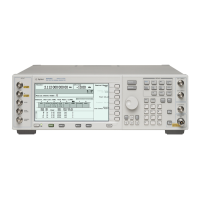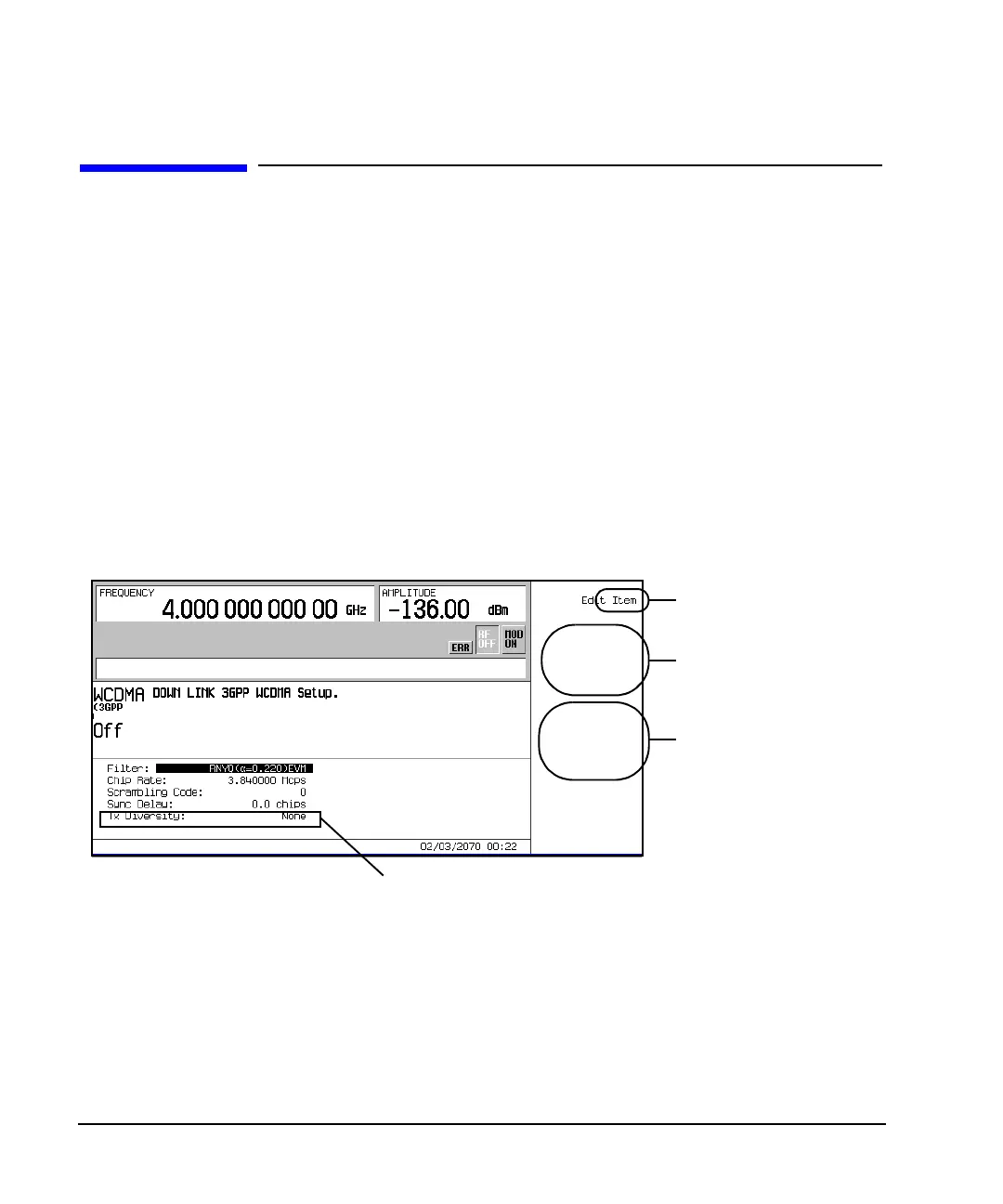586 Chapter 17
W-CDMA Downlink Digital Modulation for Receiver Test
Transmit Diversity Overview
Transmit Diversity Overview
Transmit diversity is used to diminish the effects of fading by transmitting the same information from two
different antennas. However the data from the second antenna (antenna two) is encoded differently to
distinguish it from the primary antenna (antenna one). The user equipment (UE) must be able to recognize
that the information is coming from two different locations and properly decode the data.
The ESG gives you the ability to perform open-loop transmit diversity testing on UEs. This involves using
two ESGs, one setup as antenna one (non-diversity antenna) and the other configured as antenna two
(diversity antenna).
The implementation of transmit diversity in the ESG follows the 3GPP specifications and employs space
time transmit diversity (STTD) encoding on the primary common control physical channel (P-CCPCH),
page indicator channel (PICH), and the dedicated physical channel (DPCH). The synchronization channel
(SCH) uses time switched transmit diversity (TSTD). The ESG gives you the option of disabling the TSTD
mode for the SCH. The transmit diversity display for the ESG is shown in Figure 17-7.
Figure 17-7 ESG Transmit Diversity Selection Display
While the common pilot channel (CPICH) is not STTD encoded, it is affected when transmit diversity is
utilized. The CPICH is transmitted from both antennas (ESGs), but the pre-defined bit sequence for the
CPICH will differ between antenna one and antenna two per the 3GPP specifications.
While STTD encoding transmits the same information through both antennas, the data on antenna two is
transmitted in a different order and some bits are inverted. This is shown in Figure 17-8.
Antenna Selection–TSTD
Antenna Selection–TSTD
is not Active for the SCH on
Transmit Diversity Mode Selection
Selection when Tx Diversity
is not used
is Active for the SCH
the Selected Antenna

